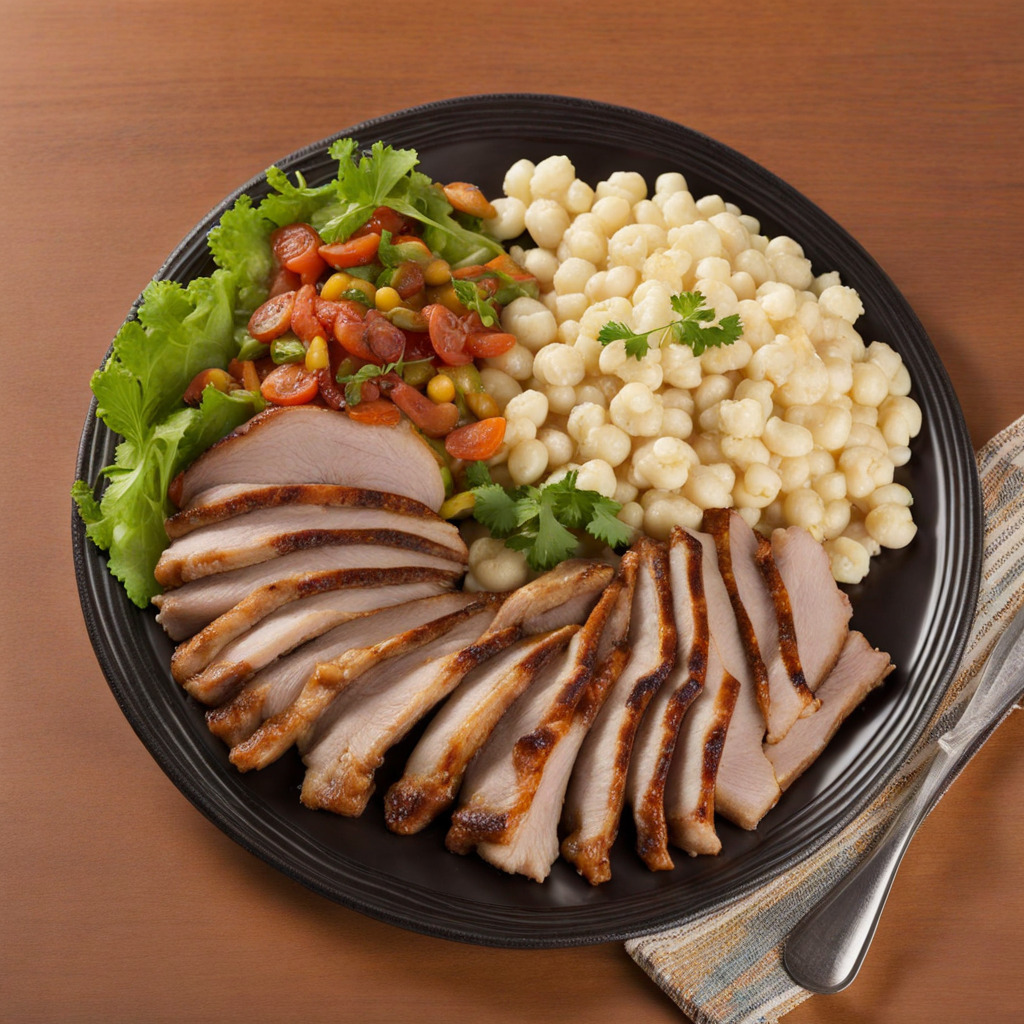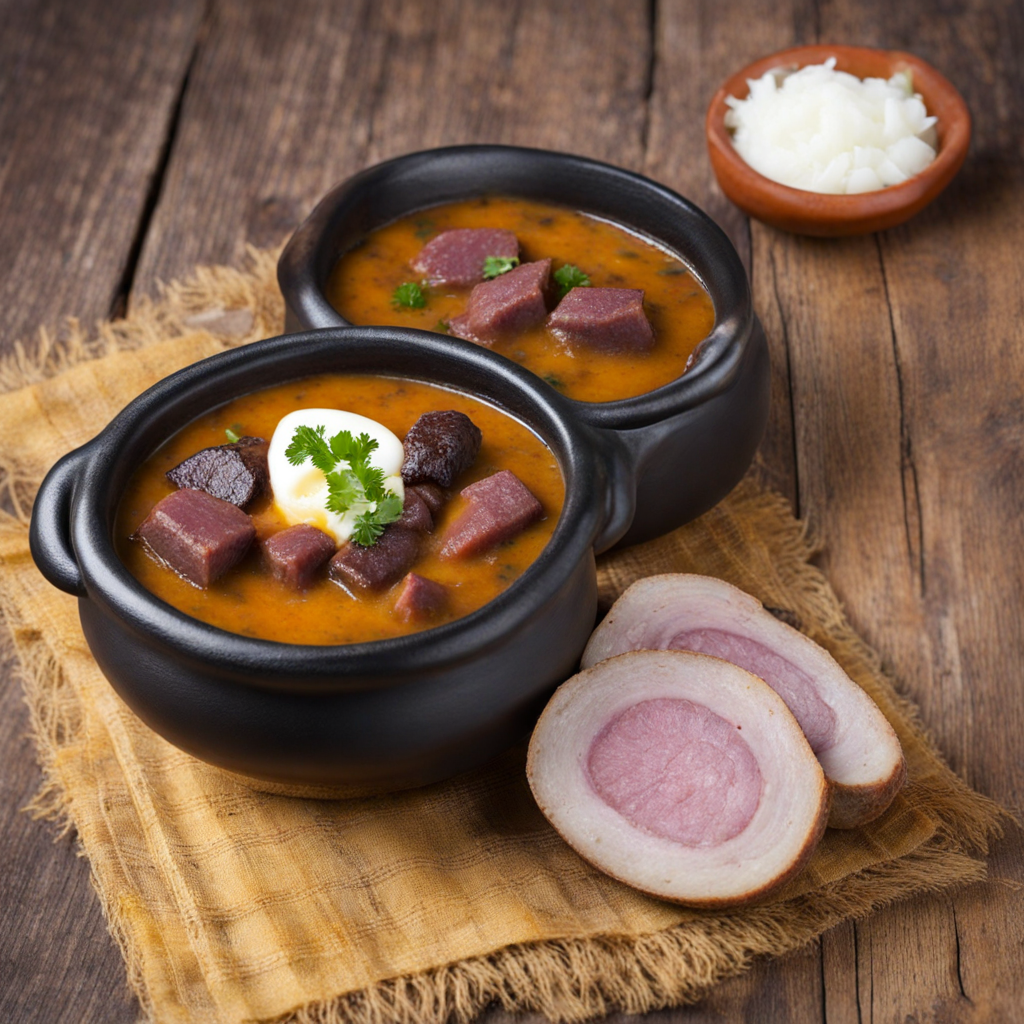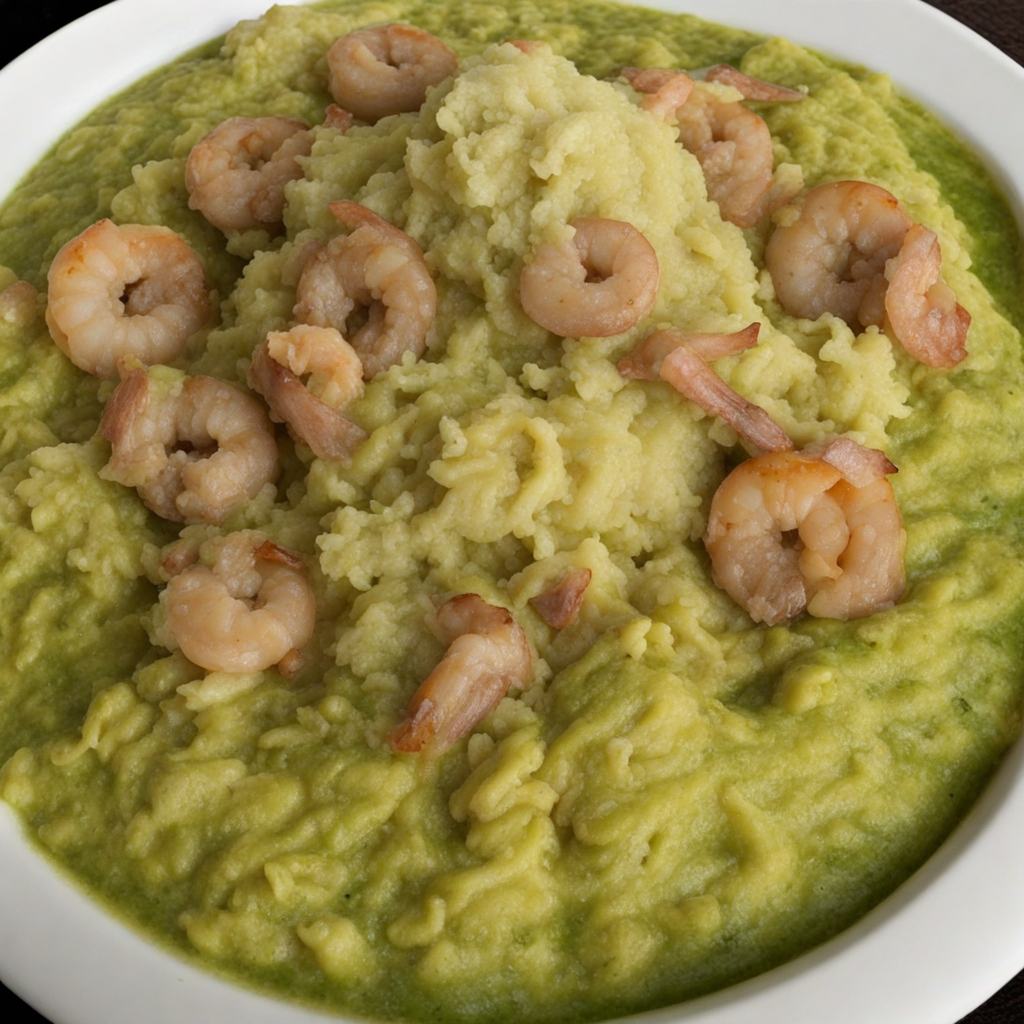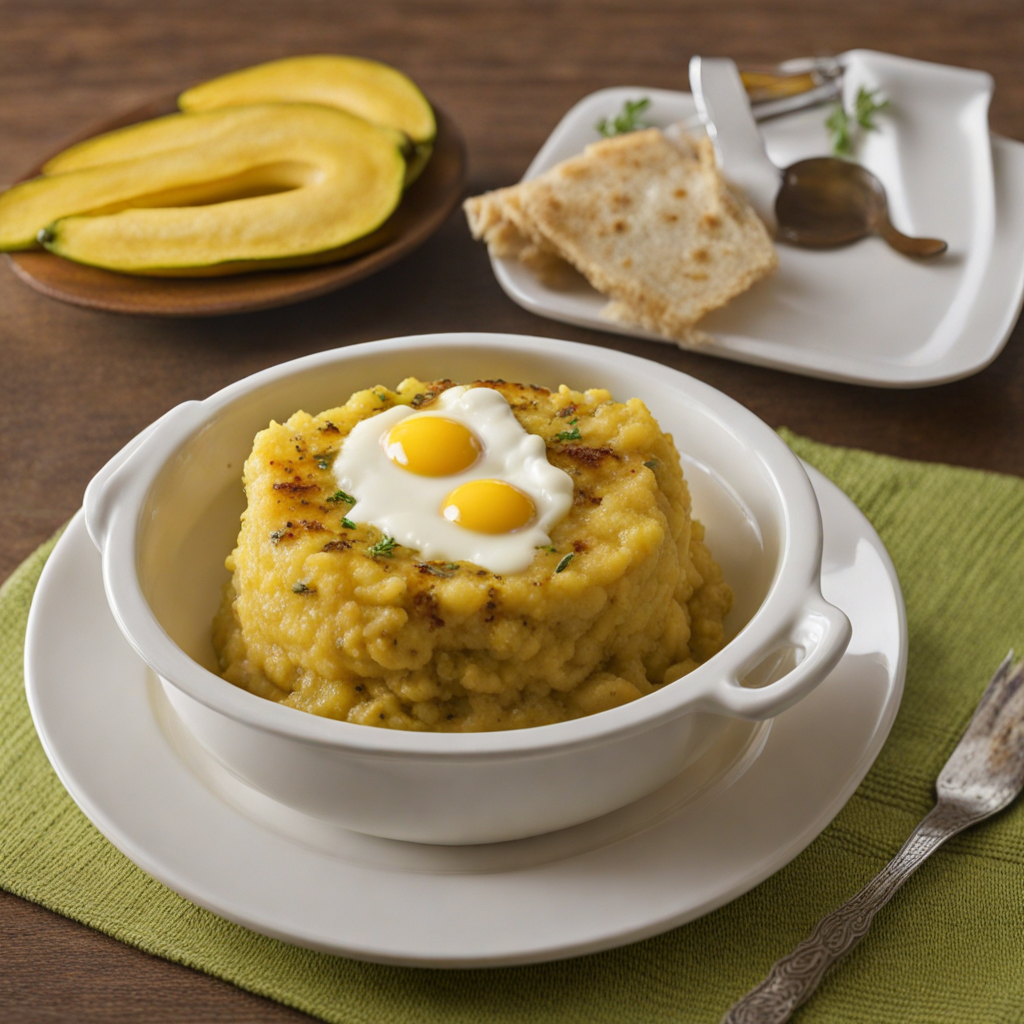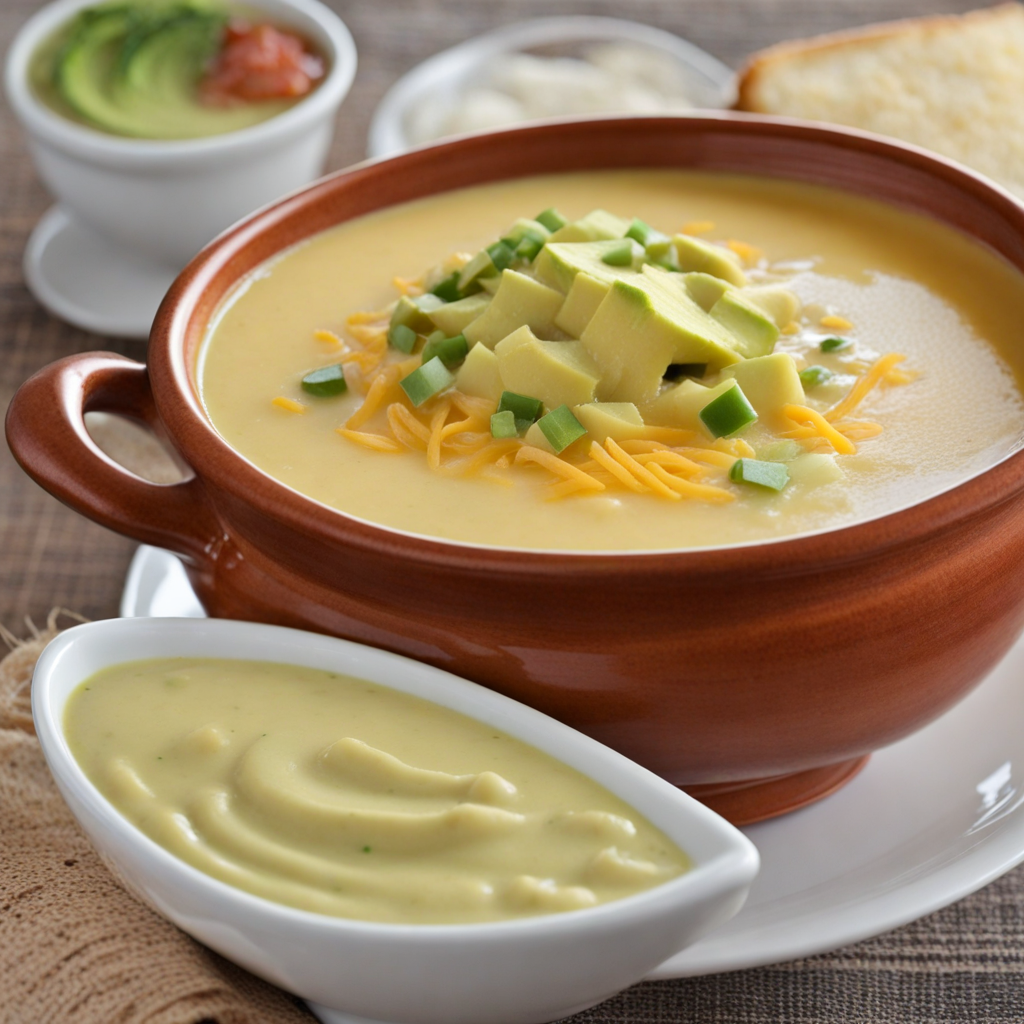Hornado
Hornado is a traditional Ecuadorian dish that showcases the country’s rich culinary heritage, particularly in the Andean region. This mouthwatering dish features a whole roasted pig, typically seasoned with a blend of spices and herbs that infuse the meat with incredible flavor. The preparation begins with marinating the pork in a mixture of garlic, cumin, and achiote, which not only tenderizes the meat but also gives it a beautiful golden hue once roasted. The slow cooking process allows the fat to render, resulting in skin that is crispy and crackling, while the meat remains succulent and juicy, making every bite a delightful experience. Served with traditional accompaniments, Hornado is often paired with llapingachos (potato pancakes), mote (hominy), and a fresh, tangy salsa known as ají. The combination of textures and flavors creates a harmonious balance, where the richness of the pork is complemented by the earthiness of the potatoes and the brightness of the salsa. Each element on the plate adds to the overall experience, making Hornado not just a meal, but a celebration of Ecuadorian culture and hospitality. Enjoying Hornado is often a communal affair, reflecting the importance of family and friends in Ecuadorian dining. It is commonly served during festivities and gatherings, where the roasted pig becomes the centerpiece of the table. The act of sharing this dish brings people together, allowing them to savor the unique flavors of Ecuador while creating lasting memories. With its bold spices, tender meat, and festive spirit, Hornado is a true culinary gem waiting to be discovered.
How It Became This Dish
The Rich History of Hornado: Ecuador’s Culinary Treasure Hornado is a traditional Ecuadorian dish that embodies the essence of Andean cuisine, combining rich flavors with deep cultural significance. At its core, hornado consists of slow-roasted pork, typically marinated with a blend of spices and served alongside llapingachos (potato cakes), mote (hominy), and a selection of fresh salads and salsas. The dish is not only a feast for the senses but also a reflection of Ecuador’s diverse cultural heritage, particularly in the highland regions where it is most popular. #### Origins of Hornado The origins of hornado can be traced back to the indigenous peoples of the Andes, who have been raising pigs for centuries. Pigs were introduced to South America by Spanish colonizers in the 16th century, and they quickly adapted to the Andean environment. Over time, these animals became a staple in the diets of both indigenous communities and mestizos (people of mixed European and indigenous descent). The practice of roasting pork evolved, influenced by both indigenous cooking traditions and Spanish culinary techniques. The name “hornado” itself is derived from the Spanish word “hornear,” meaning “to bake” or “to roast.” This reflects the Spanish influence on the dish, as roasting was a common method of cooking meat in European cuisine. However, hornado has its unique characteristics, firmly rooted in Ecuador’s rich agricultural practices and local flavors. The dish is often prepared during communal gatherings and celebrations, highlighting its significance in Ecuadorian culture. #### Cultural Significance Hornado holds a special place in the hearts of many Ecuadorians. It is more than just food; it is a symbol of family, community, and tradition. The preparation of hornado is often a communal affair, with families coming together to marinate the pork, prepare side dishes, and share in the cooking process. This communal aspect fosters a sense of belonging and reinforces cultural ties. In the Andean highlands, hornado is frequently served during festivals, weddings, and important celebrations, making it a dish synonymous with joy and festivity. For example, during the Inti Raymi festival, which celebrates the Inca sun god, hornado is often featured prominently on tables, showcasing its importance in traditional celebrations. In addition to its role in festivities, hornado also reflects the agricultural bounty of Ecuador. The dish utilizes locally-sourced ingredients, such as corn, potatoes, and a variety of spices, showcasing the richness of the country’s culinary landscape. The preparation and consumption of hornado are tied to the agricultural calendar, with many families raising their own pigs and growing the necessary ingredients. #### Development Over Time As Ecuador has evolved, so too has the preparation of hornado. In the past, the dish was often cooked in traditional clay ovens, which imparted a unique flavor and texture to the meat. The process of cooking hornado in a clay oven, known as a "hornos de barro," remains popular in rural communities, where families still adhere to traditional methods. However, with the advent of modern cooking appliances and techniques, many urban dwellers now prepare hornado in conventional ovens or even pressure cookers, adapting the recipe to fit contemporary lifestyles. The rise of street food culture in Ecuador has also influenced the way hornado is consumed. In cities like Quito and Cuenca, hornado is commonly sold by street vendors, who serve it as a quick and satisfying meal. These vendors often showcase their unique takes on the dish, adding their own flair with different marinades and side dishes, which has led to a variety of regional interpretations. In the 21st century, hornado has gained recognition beyond Ecuador’s borders. Ecuadorian restaurants around the world have introduced the dish to international audiences, showcasing it at food festivals and cultural events. This globalization of hornado reflects the growing appreciation for Ecuadorian cuisine and highlights the importance of preserving traditional cooking methods while also embracing innovation. #### The Art of Preparation The preparation of hornado is an art form, steeped in tradition and technique. The process begins with selecting a high-quality piece of pork, often the shoulder or belly, which is known for its rich flavor and tenderness. The meat is then marinated with a mixture of garlic, cumin, achiote (annatto), and other spices, allowing the flavors to penetrate deeply. Once marinated, the pork is slow-roasted, traditionally in an open fire or clay oven, for several hours. This slow cooking method ensures that the meat becomes tender and juicy while developing a crispy, golden-brown skin. The skin is often the highlight of the dish, prized for its crunchiness and flavor. The cooking process is accompanied by the enticing aroma of spices wafting through the air, drawing people together in anticipation of the meal. Hornado is typically served with a variety of accompaniments. Llapingachos, made from potatoes and cheese, are a common side dish, providing a hearty complement to the rich pork. Mote, or hominy, adds a delightful texture, while fresh salads and salsas introduce brightness and acidity, balancing the richness of the meat. The dish is often garnished with fried plantains or avocado, making it a colorful and flavorful feast. #### Conclusion Hornado is more than just a dish; it is a celebration of Ecuadorian culture, history, and community. Its origins reflect a blend of indigenous and Spanish influences, while its preparation and consumption continue to evolve with changing times. As Ecuadorians gather around tables adorned with hornado, they participate in a tradition that has been passed down through generations, a testament to the enduring power of food to bring people together. In an increasingly globalized world, hornado stands as a symbol of national pride and cultural identity, inviting people to savor the flavors of Ecuador while appreciating the rich tapestry of its culinary history. Whether enjoyed at a festive gathering or from a street vendor, hornado remains a beloved dish that captures the heart and soul of Ecuadorian gastronomy.
You may like
Discover local flavors from Ecuador


